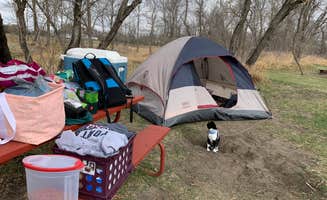Best Campgrounds near Towner, ND
Campgrounds near Towner, North Dakota range from established sites with amenities to dispersed camping areas in natural settings. The Denbigh Experimental Forest offers free dispersed camping for tents, RVs, and yurts with drive-in and walk-in access, though it lacks drinking water and other facilities. Closer to town, Towner City Park provides electric hookups and basic amenities for tent and RV campers. Buffalo Lodge Lake County Park, located about 20 miles west of Towner, features drinking water, picnic tables, and trash service in a lakeside setting that accommodates both tent and RV camping.
North Dakota's seasonal conditions significantly impact camping experiences in the Towner region. Winter brings extreme cold and potential snow, while summer offers more moderate temperatures. "We decided to do some camping in North Dakota the last week of November into December. It was cold and we got caught in a snow storm. We survived; it was ridiculous and hard core," noted one camper about winter camping in the area. Most campgrounds in the region have limited or no services during winter months, with full amenities typically available from late spring through early fall. Cell service varies throughout the area, with better coverage near towns and more limited connectivity in forested or remote areas. Campers should be prepared for mosquitoes during warmer months, particularly near water sources.
Several visitors highlight the natural beauty and recreational opportunities available at campgrounds in the region. Lake Metigoshe State Park, located about 40 miles north of Towner, receives consistently positive reviews for its lakeside camping, hiking trails, and family-friendly amenities. "This State Park is in North Dakota near the Canadian border. With a very large body of water that has many amenities from fishing, boating, canoeing, kayaking and paddle boarding," shared one reviewer. Buffalo Lodge Lake offers boating access and fishing opportunities, with tent sites available along the shoreline. Campers seeking more solitude may prefer the Denbigh Experimental Forest, though reviews mention potential tick issues during certain seasons. The proximity of many campgrounds to water features makes them popular destinations during summer months, when visitors can enjoy swimming, fishing, and boating activities.



